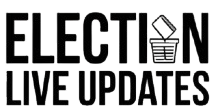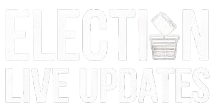Democrats are extra pessimistic about the way forward for their social gathering after President-elect Trump’s victory over Vice President Harris earlier this month, a brand new survey exhibits.
The info, launched Friday by the Pew Analysis Middle, discovered that almost half of Democrats and Democratic-leaning independents, 49 %, are pessimistic concerning the future. On the flip facet, round 51 % stated they’re “very or somewhat optimistic.”
The negativity is over 20 factors increased than it was after the 2022 midterm elections, in response to Pew. The gloom throughout the social gathering can be 10 factors increased than it was when former Secretary of State Hillary Clinton misplaced the 2016 election to Trump, the ballot famous.
Democrats beneath the age of fifty had been extra doubtless than those that are older to share a pessimistic outlook — 50 % to 39 %. Progressive Democrats had been additionally extra doubtless than moderates to have unfavourable emotions after Trump’s win, 52 % to 46 %, per the survey.
After securing the bulk in each chambers of Congress and the White Home, Republicans have a better degree of optimism. The positivity in the newest survey is way increased in comparison with after his first win in 2016 — 86 % to 79 %, respectively.
Following the 2022 midterms, optimism throughout the GOP hovered round 65 %, in response to the ballot. This was doubtless on account of an anticipated pink wave that didn’t materialize.
Conservative GOP members are extra optimistic concerning the social gathering’s future than those that are extra reasonable or liberal-leaning, 92 % to 78 %, the survey exhibits.
Pew additionally discovered that extra Individuals stated the GOP represents their pursuits than those that stated the identical concerning the Democratic Get together.
Round half of Individuals, 50 %, stated the GOP represents “people like them” considerably or very properly in comparison with 43 % who stated the identical concerning the opposing social gathering.
The Pew Analysis information was a part of a survey performed between Nov 12-17 amongst 9,609 U.S. adults. The margin of error was 1.5 share factors.







